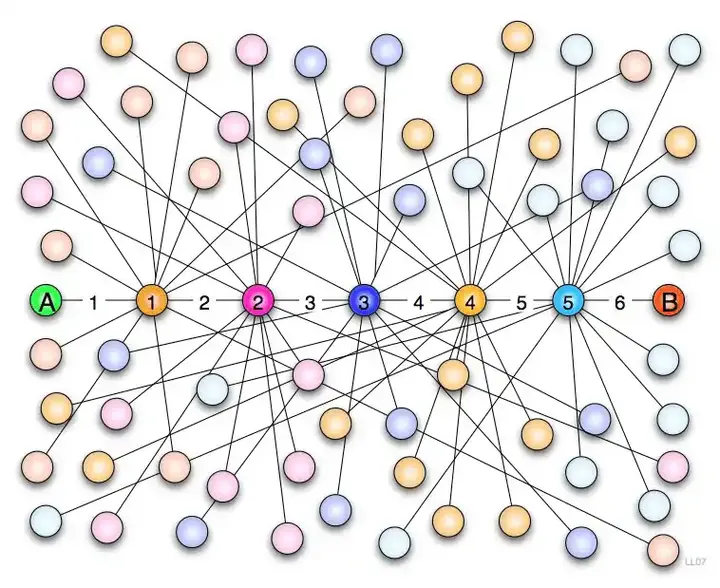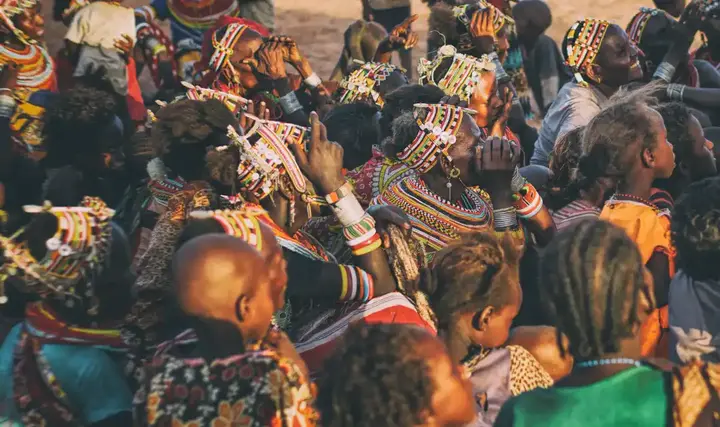The Power of Connection: Are We All Connected by Six Degrees of Separation?

The world is a very big place, but the number of people inhabiting it seems to be greater. Right now, there are approximately 7.1 billion people living on Earth, going to work, watching TV, cooking dinner, and who else knows. It's perfectly normal to feel disconnected from the lives of different people you know nothing about. Psychologically, humans tend to live in their own small bubbles, which are often represented by families or communities. However, the fact that every human being has an individual bubble that sometimes intersects with another individual's bubble is what unites everyone on the planet.
Show key points
- The theory of "six degrees of separation" suggests that any two people on Earth can be connected through a chain of no more than six acquaintances.
- Although the math behind the theory appears logical, it oversimplifies social realities, such as shared friend groups that limit the uniqueness of connections.
- Technological advancements in communication and social media have significantly reduced the average number of steps needed to connect people globally.
- ADVERTISEMENT
- The concept inspired several social networking platforms, notably the early site SixDegrees.com and currently influential platforms like Facebook and Twitter.
- Critics argue that the theory fails to account for isolated populations, like the Kurobo tribe, who have no realistic connection to broader social networks.
- The idea of six degrees has permeated popular culture through games like "Six Degrees of Kevin Bacon" and academic systems like the Erdős number for mathematicians.
- Playwright John Guare helped popularize the theory with his 1990 play, portraying both the comforting and frustrating aspects of human connectedness.
What is the idea behind "six degrees of separation"?

The "six degrees of separation" is a theory that everyone on the planet is connected to everyone else, by identification or familiarity, such as the "friend of a friend" series and through a maximum of six steps. In other words, the theory assumes that you know everyone on Earth through a maximum of six jumps in the chain of friendship. You may be friends with a friend of a friend of Barack Obama, Johnny Depp, or even a Cambodian pirate. The idea was first put forward in 1929 by Hungarian writer Frejis Carinthi, in a short story called "Chains". However, the idea did not become popular until the fifties, and its plausibility was further examined.
Recommend
Is the world shrinking?

Due to technological advances in communications and travel, friendship networks can now grow further and extend greater distances. Even if more habitable environments are discovered, due to the ease of communication, social distancing will decrease. This idea influenced a great deal of early thinking on social networking sites, and without explanation, searches became easier for this very reason.
Is the world "small" at first?

If you look at the numbers, the idea of six semester grades seems very sensible. Assuming that each person knows at least 44 people, that each of those people knows 44 completely new people, etc., mathematics shows that in just six steps, each person can connect to 6^44, or 7.26 billion people – more people alive on Earth today. However, this assumption is somewhat inaccurate due to the fact that most people usually share friends, so someone else's 44 friends may not be very different from the previous person.
In 1961, a study conducted at the Massachusetts Institute of Technology concluded that in a society the size of the United States with a social structure, "it is practically certain that any two individuals can communicate with each other through two intermediaries at most." In socially unorganized systems, six people are unlikely to bridge the gap between unfamiliar faces.
In 2003, Columbia University conducted an experiment on the availability of e-mail to Internet users. The 100,000 registered people were asked to send emails to acquaintances who they thought would know the end target user. Among the emails that reached the target user successfully, although shorter lengths were more common, some emails didn't reach their target until after 7, 8, 9, or 10 steps.
One early example on the social networking site was SixDegrees.com. At its peak, some 3.5 million people registered as members. It allowed users to list friends, family members, and acquaintances, send messages, post bulletin board items to people in their first, second, and third grades, and see their association with any other user on the site. Since then, Facebook and Twitter have reduced the number of brokers in the chain, to nearly 3. These sites contain huge amounts of data with information about education, profession and personal interests. This data significantly improves the survey by identifying the causes of groups of familiar people.
Criticisms of the theory

Even after all the technological advances, there are some indigenous tribes on the land that have been completely isolated from the general population. For this very reason, the concept of six degrees of separation is mostly an urban myth.
Kurobo is the name given to a tribe of indigenous people living in the lower Javari Valley in the Western Amazon basin. The splinter group has an estimated 200 members, who have been separated from the outside world since their discovery. Since they are completely isolated, no matter how long the chain is, they cannot be connected to anyone else, such as an engineer in Dubai.
In popular culture, "Six Degrees of Kevin Bacon" was invented as a kind of fun around the concept. The goal of the game was to find a link between any actor and Kevin Bacon through the people he collaborated with in any of his films or commercials. Google has since allowed users to calculate the Beacon number for any representative on its search engine.
Similarly, a system has been developed to assign a number to mathematicians. In this system, each mathematician was given a number based on the "cooperative distance" between him and the mathematician Paul Erdös, which was measured by co-authoring articles in mathematics. The person who collaborated with him is Erdos Zero, while the person who collaborated with an Erdos collaborator is Erdos 1.
In 1990, American playwright John Goyer wrote a play in which he promoted the concept of six degrees of separation. Although romantic, it is his most famous work, and it is believed that he brought this concept to a much wider audience. He found it comforting for everyone to be so close to us, but at the same time, it's annoying that we have to find the right six people to be close to someone else.








